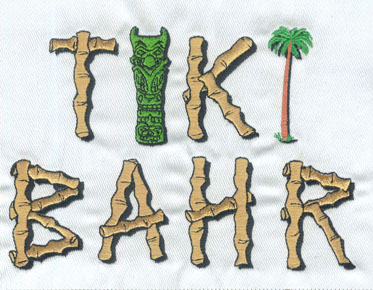Is Embroidery Digitizing Hard?
Embroidery digitizing refers to the process of creating a digital file that contains instructions for an embroidery machine to sew a design onto fabric. This involves converting an image or design into a format that the embroidery machine can read and understand. The digital file, also known as a stitch file, contains information about the size, shape, and colors of the design, as well as instructions on how to place each stitch.
While the process can seem daunting at first, with some practice and patience, anyone can learn how to digitize embroidery designs. In this article, we will explore what embroidery digitizing is, the skills required to do it, and some tips to help you get started.
Is Embroidery Digitizing Hard?
Embroidery digitizing can be challenging for beginners, as it requires a certain set of skills and knowledge to create a high-quality stitch file. Here are some of the skills required for embroidery digitizing:
Computer Skills: Digitizing requires a good understanding of computer software, as the designs are created using embroidery software. You should be comfortable using a computer, as well as the software needed for digitizing.
Design Skills: Embroidery digitizing involves creating a design that can be translated into a stitch file. A good understanding of design principles such as color theory, composition, and proportion is essential.
Attention to Detail: A good digitizer must be able to pay attention to the smallest details of the design, such as stitch length, density, and direction. These details can have a significant impact on the final product.
Practice: As with any skill, embroidery digitizing requires practice. You will need to spend time learning the software and experimenting with different designs to develop your skills.
Tips for Getting Started with Embroidery Digitizing
Invest in good software: The right software can make a big difference in the quality of your digitized designs. Look for software that is user-friendly and offers features such as automatic stitch generation, a wide range of editing tools, and the ability to save and share designs.
Start with simple designs: When you are first starting out, it is best to begin with simple designs. This will allow you to focus on the basic skills of digitizing, such as creating a proper stitch count and making sure the design is properly digitized.
Practice, practice, practice: As with any skill, practice is essential for embroidery digitizing. Spend time experimenting with different designs and settings to develop your skills.
Learn from others: Joining an embroidery
community can be a great way to learn from others who are more experienced. You
can find tips, tutorials, and advice on forums, social media groups, and other
online communities.
Embroidery digitizing can be a challenging
skill to master, but with practice and patience, anyone can learn how to
digitize embroidery designs. The process requires a good understanding of
computer software, design principles, attention to detail, and practice. By
following the tips outlined in this article and investing in the right
software, you can begin your journey into the world of embroidery digitizing.



